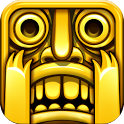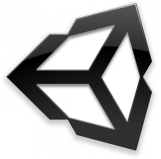With smartphones and tablets taking over personal computing, there is an increasing demand for high quality mobile games. Since newer phones like the iPhone 5S and the Samsung S4/S5 now sport dedicated quad-core graphics chips, mobile phones can now deliver console level 3D graphics in games. To cater to this demand mobile game developers have increased their focus on 3D games. However given the number of mobile platforms in the market (iOS, Android, Windows Phone, etc.), it is not possible to design a high definition 3D game natively for each platform; considering the efforts and costs involved. The only way forward is to go cross platform.
As we had discussed in our last post “Cross Platform 2D Games Development”, cross platform game development offers several advantages over native. The most important being that it enables you to code just once and deploy the game on multiple platforms. But with the wide variety of cross platform development tools out there, the question is – which platform to use? Particularly for developing 3D games.
At the moment, there are several popular tools available in the market for cross platform game development such as:


The Unity engine also offers a wide variety of features that really help in the development of 3D mobile games. These include:
Due to these advantages, the Unity 3D engine has been used by leading publishers such as Rovio, Madfinger games and Imangi Studios to create smash hits such as Temple Run, Temple Run 2, Bad Piggies, Dead Trigger, ShadowGun and Battlestar Galactica Online, among others.

We’ve seen these advantages first hand in our use of the Unity 3D engine. For example on one of our projects, we worked on a cross platform endless runner type game (similar to Temple Run) for tablets & smartphones. By using Unity, we were able to create the core gameplay in just a week’s time, as we were able to use an off the shelf character model (which included run, jump, slide and fall animations that we needed) to make the main character run through the maze.
For creating the game’s dynamic environment, we needed to continuously create the environment in front of the player with various props and NPCs (Non Playable Characters). By using Unity we were able to create this environment very easily, by using pre-built segments of the maze as pre-fabs and then adding them dynamically with some randomization, to the gameplay scene.
The main challenge here was how to balance the environment creation with the memory available on each device, so that it did not undermine the game’s performance. But with the Unity 3D engine’s support for lazy loading, we were able to do this quite easily, without impacting the game’s load time or performance in any way. By using lazy loading we were able to prioritize object creation in the character’s path and thus control asset loading, which allowed us to dynamically instantiate only the content that the player needed to see in his immediate path. This allowed us to create a completely fluid game without impacting game or device performance. Another Unity 3D feature that helped us in this area was occlusion culling, which we used extensively to reduce rendered objects for optimal game performance.
Another major advantage of Unity that we’ve observed is that it has a very low learning curve and is very easily adopted by developers who have experience using C# and JavaScript languages. As such they don’t require additional training in order to develop on Unity 3D. This is HUGE PLUS, as it enabled our developers to hit the ground running and saved us considerable cost and time that would have otherwise been needed for first training these resources on Unity.
In our experience, the Unity engine greatly simplifies cross platform 3D games development, due to the wide array of tools and features it offers, which combined, make the game creation process very easy. Its multi-faceted editor, built-in animation system, ready-made assets, support for advanced physics, visual effects and wide cross platform support, make it the ideal tool for developing cross platform 3D games. And given the demand for cross platform 3D mobile games these days with rapid development being a ‘must’, we believe the Unity engine is the best possible option for 3D mobile game developers.
Here’s an excellent tutorial on Unity 3D by the Walker Boys Studio, to help get you started with the Unity3D game engine. Be sure to check out their free Unity Training Video Series at – Walker Boys Studio – Unity Training.
If you have a game idea that you would like to discuss, want suggestions on cross platform Unity game development or would like to know more about our games development services, please feel free to get in touch with us at [email protected].
USA408 365 4638
1301 Shoreway Road, Suite 160,
Belmont, CA 94002
Whether you are a large enterprise looking to augment your teams with experts resources or an SME looking to scale your business or a startup looking to build something.
We are your digital growth partner.
Tel:
+1 (408) 412-3813
Support:
+1 (408) 512 1812

COMMENTS ()
Tweet